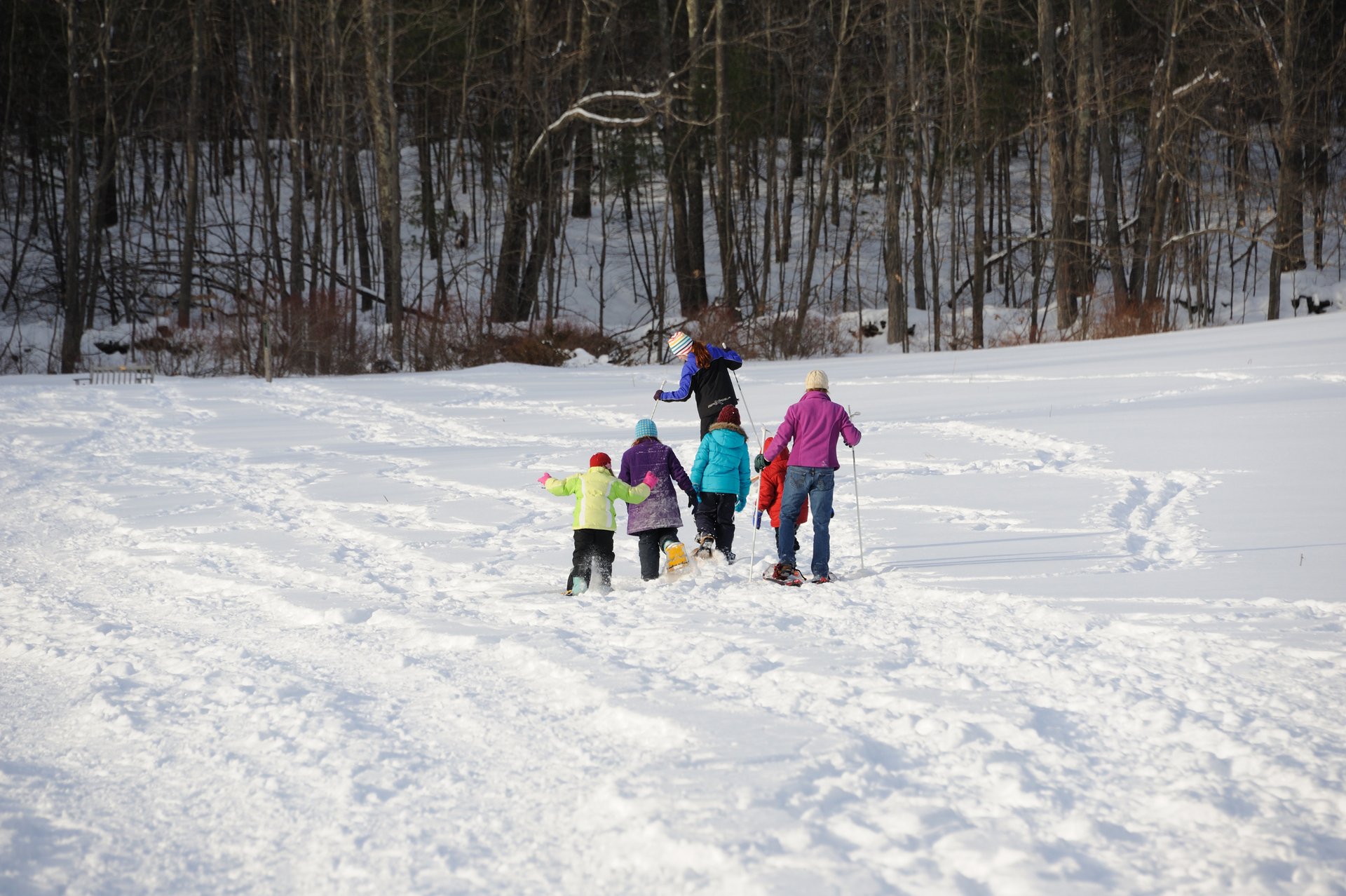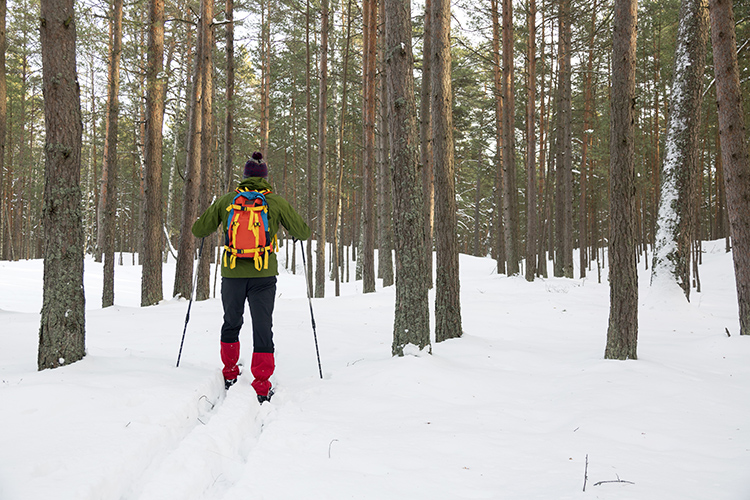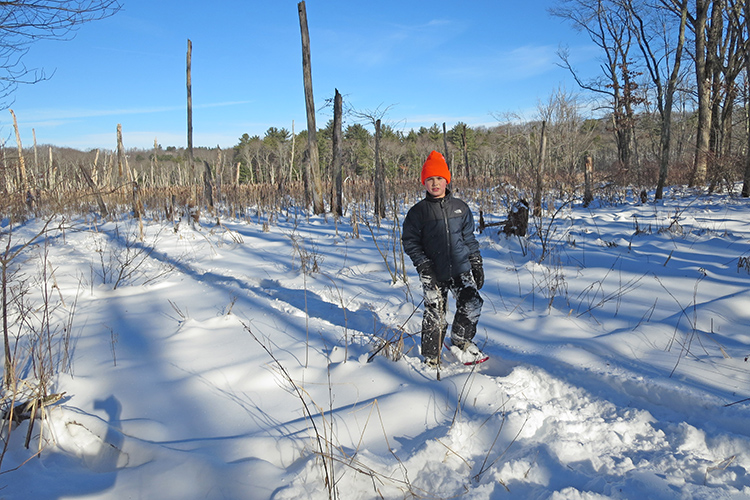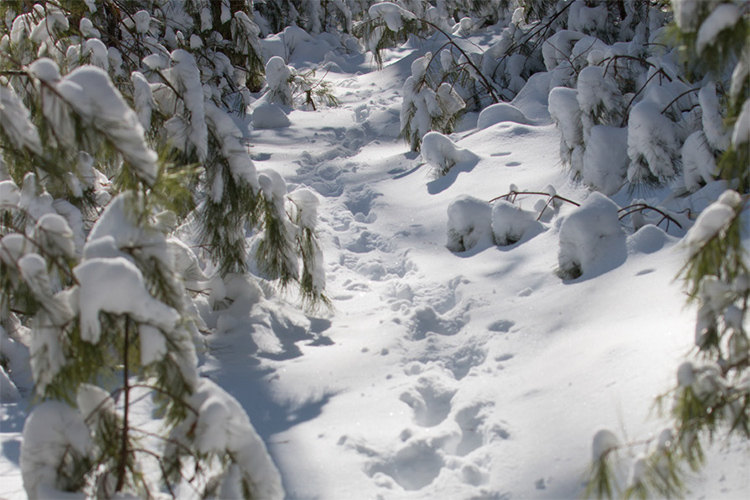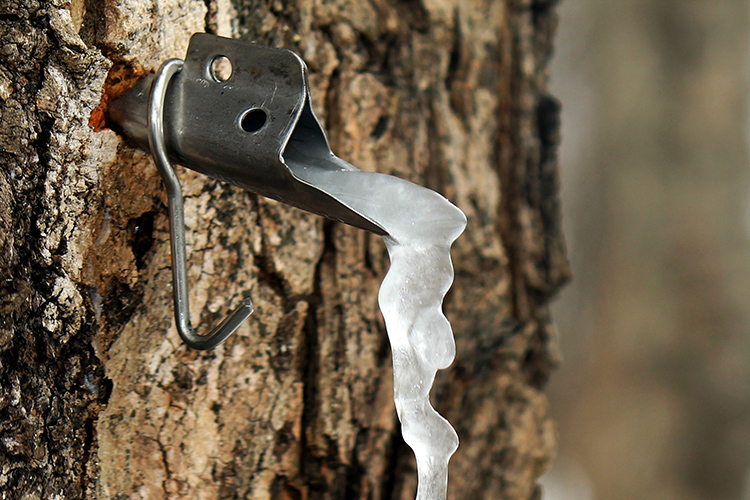Let It Snow: How to Get Outdoors This Winter
January 01, 2018
Looking for ways to get outside this winter and experience nature in all its brisk, snowy glory? Consider these “Best of Winter” activities to do by yourself, with your family, or with a group of friends.
Cross-Country Skiing
WHY: Faster than walking, but not so fast that you miss details such as tracks or bird calls, cross-country skiing envelops you in winter sounds and sights.
HOW: Rent skis at a ski shop or outdoor gear store and head to a local park, nature preserve, or a Mass Audubon wildlife sanctuary that allows skiing. Consider the Highland Farm Loop Trail at Habitat in Belmont, where you can look for great horned owls hooting their courtship calls and tending their nests as you schuss along. Before you pick a location, consider the terrain. Are you looking for hills or flat areas? Bring plenty of water and dress in layers; you will most likely work up a sweat as you go and cool down fast when you stop to rest.
Snowshoeing
WHY: While snowshoeing is generally more physically demanding than cross-country skiing, what you lose in grace you gain in maneuverability and access to steeper terrain. Plus, it’s a family-friendly, easy way to get exercise—if you can walk, you can snowshoe!
HOW: Many of Mass Audubon’s wildlife sanctuaries offer snowshoe programs or rentals. Just be sure to wear proper footwear and bring gaiters if you have them. Any sanctuary with good hiking trails is likely also great for snowshoeing. Start off with a trail that’s groomed or nicely packed down, which will allow you to move at a faster pace than trudging through fresh, unbroken snow. Note that you may be sharing trails with cross-country skiers, so try to steer clear of their tracks and give them the right-of-way on set trail systems. It’s easier for someone on snowshoes to step off the trail safely.
Wildlife Tracking
WHY: The winter landscape, especially when snowy, offers an opportunity to discover how much wildlife activity occurs around us that we don’t usually see. While tracking, you might spot cozy dens and burrows, figure out what animals are eating, and find out where they routinely travel.
HOW: You can track almost anywhere, including in your backyard! Pick up a handy guide—Peterson’s and Falcon Guides are great options, as is Tracking and the Art of Seeing by Paul Rezendes (all available in the Audubon Shop). Or, if you want to learn from an instructor, sign up for a naturalist-guided tracking program at a wildlife sanctuary.
Maple Sugaring
WHY: This annual late-winter tradition is a feast for the senses. Watch the sap drip from the trees, smell the steam rising from sap boiling down into syrup, and then taste the sweet final product.
HOW: Several of Mass Audubon’s wildlife sanctuaries have active sugaring programs, including Moose Hill in Sharon, Drumlin Farm in Lincoln, Ipswich River in Topsfield, Boston Nature Center in Mattapan, Habitat in Belmont, and North River in Marshfield. Take a program, rent a bucket, attend a festival, sample different grades of syrup and other maple treats, and so much more!
Stargazing
WHY: In winter, the sky tends to be clearer and the stars brighter because cold air doesn’t hold as much moisture and particulate matter as warm air. Also, in January and February, the Earth’s northern hemisphere looks out to the edge of our galaxy where there are fewer stars clustered together, so with the naked eye or even a decent set of binoculars, you will get clearer views of the stars.
HOW: To appreciate the winter night sky, simply walk outside and look up. For a really great view, consider getting away from towns or cities to reduce light pollution. Several Mass Audubon sanctuaries offer star-watching programs throughout the winter. At Moose Hill in Sharon, you can even meet with local astronomers and ask questions as you take a peek through their big telescopes. Regardless of where you go, skymaps.com has great sky atlases and other resources to help you identify planets, stars, and major constellations.
Explore Outdoors This Winter
These winter favorites, and more, can be found at Mass Audubon wildlife sanctuaries. Find a place to explore near your or adventure somewhere new to make your winter memorable.
Upcoming Winter Programs
See MoreBird Research in Action
-
Wellfleet Bay Wildlife Sanctuary, South Wellfleet
-
Friday, November 1
9:15-10:15am
Adults & Families - 8 & up
Looking Closely: The Art and Ecology of Mushrooms
-
Museum of American Bird Art Education Center, Canton
-
Friday, November 1
10:00am-12:00pm
Adults
Level Up Your Birding: Waterfowl on Berkshire Lakes
-
Pleasant Valley Wildlife Sanctuary, Lenox
-
2 classes starting
Friday, November 1
5:00-6:30pm
Adults
Stay Connected
Don't miss a beat on all the ways you can get outdoors, celebrate nature, and get involved.



